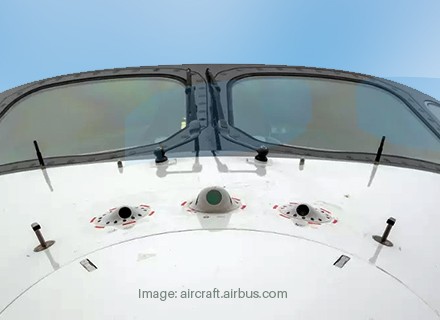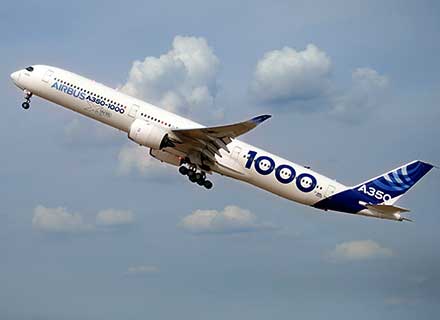In January 2023, Airbus’ ‘Project DragonFly’ entered into the testing phase, onboard an A350-1000 jetliner. The whole project is studying the feasibility of AI-powered autonomous flight systems to level up a passenger jet’s operational safety and efficiency.
The DragonFly suite reportedly has subsystems which can perform automatic emergency diversions during the cruise phase, automatic landing, and assisting during taxiing during poor weather conditions.
The development has now given rise to a potentially uncomfortable question: Is AI coming after the jobs of human pilots?
Knowing DragonFly In Detail
During the flight test campaign in January 2023, the implemented technologies successfully managed a simulated case of pilot incapacitation. The demonstrational flight took into account external factors like flight zones, terrain, and weather conditions, the aircraft was able to automatically generate a new flight path and communicate with both air traffic control and the airline’s operations control centre.
“Airbus has also explored taxi assist functions, which were tested in real-time conditions at Toulouse-Blagnac airport. The technology provides the crew with audible obstacle alerts, speed control, and guidance to the runway using a specific airport map. These features could prove vital in low-visibility ground operations, aiding in situational awareness and avoiding the need to use a follow-me vehicle,” explained an Aviacionline article.

As of 2023, there have been 11 recorded flight mishaps due to pilot incapacitation. So the ‘Project Dragonfly’ comes as a relieving development, as it will eliminate a passenger’s worst nightmare, being stuck inside an aircraft, which is not in a controlled flight path anymore, due to the pilot’s incapacitation.
The DragonFly solution will be a cost-effective one for the airport authorities as they won’t be requiring specific ground equipment. The same characteristic will also help the aircraft to land even in “unequipped” or remote airports.
Threat For Human Pilots?
Although Airbus is dubbing its latest project as an aiding mechanism for pilots, it comes at a time when there is debate among aviation industry stakeholders on whether AI will replace human pilots completely in the near future.
Emirates chief Tim Clark recently told CNBC, “You might see a one-pilot aircraft. Could the aircraft be flown on a fully automated basis? Yes it could, technology is right up there now. [But passengers] like to think there are two pilots up there. There will always be somebody on the flight deck in my view.”
Emirates boss, however, also termed the concept of ‘Pilotless planes’ a possible yet ‘long way off’ prospect, while emphasising the skills of the trained pilots to help them to perform a number of responsibilities beyond just flying the aircraft.
According to the United States Federal Aviation Administration, human error is the leading cause of both commercial airline crashes and 60-80% of such mishaps involve some type of human error.
Commercial pilots monitor the aircraft’s onboard instruments, communicate with the Traffic Controllers and Operation Control Centers and last but not least, be the trouble-shooter, if the aircraft develops glitches during the journey.
Even though modern-day jetliners arrive with fly-by-wire control mechanisms and autopilots, these are not glitch-free either, requiring human interventions during extraordinary situations. So the room for error is almost zero for commercial pilots.
Terms like pilot fatigue, workload pressure, cognitive overload, poor interpersonal communications, imperfect information processing, and flawed decision-making still find their places on the investigation report, whenever a flight mishap happens. Despite all these, passengers put their belief in human pilots. And this is where AI can come into play, by becoming the pilots’ decision-making buddy.
Man-Machine Teaming Is Way Ahead
Banking and healthcare Industries have empowered their human professionals further by harnessing the AI’s data mining capability, which in turn has quickened up decision-making processes in those fields.
A similar approach is needed in the aviation industry as well.
Jainita Hogervorst, the Director of Dubai-based Aerviva Aviation Consultancy, told the Aerotime Hub that the aviation community is cautious about entrusting full control to AI due to safety risks and the intricate nature of flying. And yes, she is true. Any electrical device is prone to malfunctioning, be it fly-by-wire or autopilot. In 2021, a Boeing 737-500 in Indonesia faced a fault in its autothrottle system (device which automatically adjusts the power to the jet’s two engines) and crashed, killing all 62 people onboard.
Boeing’s Manoeuvring Characteristics Augmentation System came under fire in 2019 when 346 people died in two crashes in Indonesia and Ethiopia involving 737MAX jetliners.
“Automation can prove beneficial by relieving pilots from repetitive or less rewarding tasks, allowing them to focus on critical decision-making processes. However, this shift also transforms the pilot’s role from active operation to one of monitoring, which humans might struggle with over extended periods effectively,” said Hogervorst.
“Human pilots possess an intuitive understanding of their surroundings, enabling them to respond swiftly to unforeseen circumstances. AI systems, while advanced, may not possess the same level of instinctual comprehension,” she added further.
Also, there is no guarantee that AI won’t misbehave or face unforeseen challenges. So instead of over-relying on technology, airlines need to have human hands inside the cockpit too.
The European Union Aviation Safety Agency (EASA) presented its ‘AI Roadmap’ in 2020, which begins with AI/Machine Language applications assisting and augmenting crew in tasks like flight preparation and execution. The second step involves enhanced human-machine collaboration, followed by the last stage where the machine operates autonomously but remains supervised by a human. The final stage envisions full autonomy, but human involvement is maintained and can come in handy in worst-case scenarios.
Final Words
“AI can automate mundane tasks such as answering common passenger queries, flight information assistance, booking changes, and baggage tracking. This allows the cabin crew to focus on their core responsibilities, such as passenger safety, emergency handling, and personalized customer service,” Hogervorst stated and yes, that should be the approach from the industry, reducing the pilots’ stress level to the bare minimum with the technology’s help, rather than completely eliminating the human hands from the cockpit.


